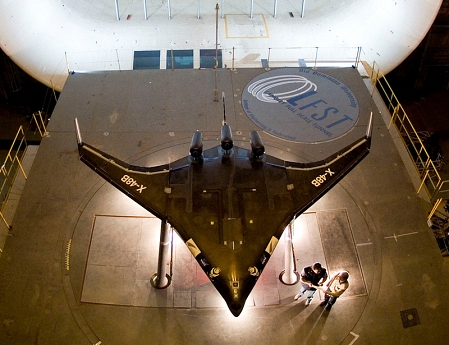Erstellt am: 18. 12. 2010 - 09:00 Uhr
The Future of Flying is under a cloud
At 1,000 metres over a patch of parched Australian countryside the engine in my 60 year-old plane decided it was done with flying. No future in this it seemed to say, as it swallowed a valve and fell suddenly silent.
Reality Check: The Future of Flying on Saturday 18th December 12-13h
My sister, who was brave enough (or foolish enough) to be my co-pilot on this trip, looked at me quizzically as we both tightened our seat belts. "I hope you know what you are doing" was the unspoken message. A nice big farmer’s field of dried stubble was within gliding distance and we were soon on the ground wondering about the near future i.e. how far to the nearest pub. I tell this anecdote to illustrate that I know more about flying’s past than its future. I know how to fly a plane that was made with leftovers from World War 2 but I could no more pilot a modern airliner than fly to Saturn’s moons. Now, having conducted a brief sortie into the future I can at least say there is a future. But it does not resemble the past and there is a big problem to be solved.

Kim Skyring
It’s stating the obvious but let’s state it anyway; aviation’s first century was one of plenty when it came to fossil fuels. Aviation’s second century is already facing a future where those fuels are not only becoming scarce and expensive but a threat to the future of our planet. If you’ve not been living under a fossil you will know I’m referring to greenhouse gas induced climate change. So what course is aviation taking to avoid the fate of the Pterodactyl?
One route is for flying to return to its roots and take its energy from the sun. The Wright Brother’s first flights were in fact solar powered. Two years before they bolted a motor to their flyer the bicycle maker’s glider soared on the updraughts over the sand dunes of Kitty Hawk where they learnt to fly. The idea of a 24 hour flight in an aircraft powered by the sun seems contradictory but this year it was achieved by the Swiss Solar Impulse with pilot André Borschberg at the controls. Andrè, as knowledgeable about aviation’s challenging future as anyone on the planet, is also aware of its past. "You could put yourself back in 1903" he told me when I asked him about the significance of what he had done. "I remember reading that one of the Wright brothers wrote it would not be possible to cross oceans with an aeroplane. It took 25 years before Lindbergh crossed the Atlantic and another 25 years in fact to carry 100 passengers over the Atlantic". André Borschberg says it’s not that everyone will fly with solar technology in the next 25 years but that "it’s a step in that direction". No pollution and no fuel on board sounds like a very big step to me.

APA / KEYSTONE WALTER BIERI
These are turbulent times for flying but one thing is certain, more and more people want to travel in one of those big aluminium tubes. Well perhaps it’s not that they want to be in a metal tube, it’s just that this is really the only option at the moment. As my (still flying) 60 year old aeroplane proves, things change slowly in this business and so it is with airliners. The basic form of aluminium fuselage with wings attached and motors hung on the wing has been around for at least seventy years. Yes there are exceptions and aluminium is slowly being replaced by carbon-fibre and other new lightweight materials but it is still the main material for the machine which will take you to your next holiday. It’s no accident we’ve ended up with this shape for the airliner, it works very well, but some visionaries are taking a look into the future and seeing the "Blended Body" - a design where wing and fuselage merge and which lends new meaning to the term "wide body" airliner. I thought the idea looked great until someone pointed out to me that when the plane banks those out in the wingtips are going to feel like they’re on a fair-ground ride.

Nasa.gov
As exciting as all of this is for someone who still cannot help looking up when a plane flies over there is still a fundamental problem. No real alternative to fossil fuels is appearing on our radar screens. Bio fuels are a possibility but they bring with them other problems related to land use and feeding the world. The unavoidable conclusion is that air-travel, just like ground-travel, needs a revolutionary fuel and we are still looking for it.


